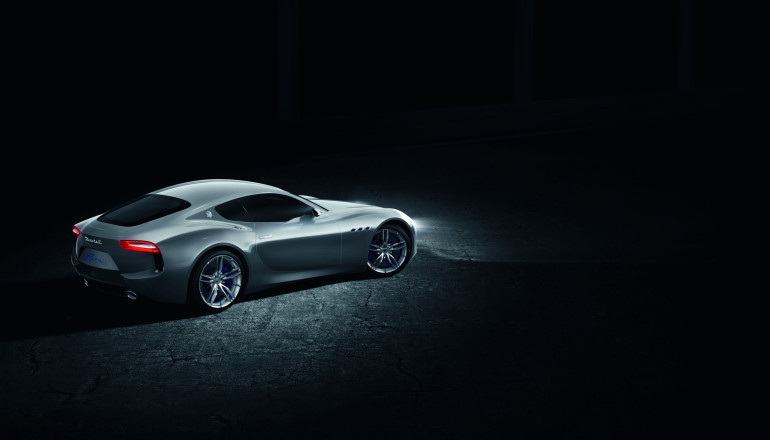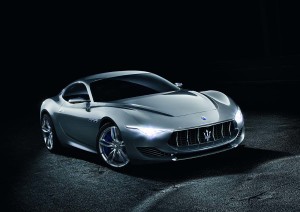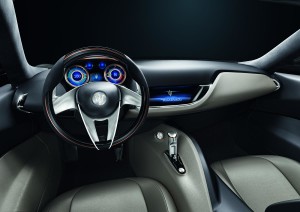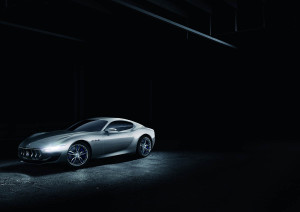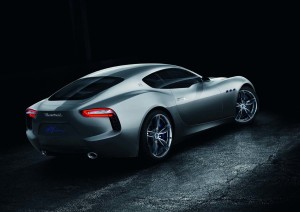Every landmark is also an opportunity for a brand to look back, look forward and race towards the future. The pitstop is usually marked by the leftover rumbling of a car that probably will never be made. Yet the echoes of that rumble can still be heard in many models to follow. Fittingly enough, the Maserati centenary concept that was unveiled in Geneva a month ago explores the brand’s stylistic heritage and throws light on the brand’s future design language.
The Alfieri is an exciting but realistic 2+2 concept car and 100% functional prototype that could be a door to the future of Maserati. The striking new concept bears the name of the most prominent of the Maserati brothers, and the engineering genius who founded “Officine Alfieri Maserati” in Bologna a century ago.
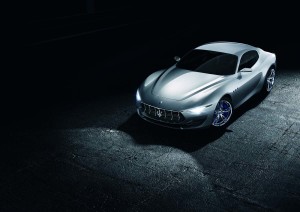
The Alfieri concept is nothing but a Maserati GranTurismo Stradale that is redefined to show us a glimpse of the future though the drive-train is an echo from the recent past.
Sporting genes
The base car for the Alfieri is the GranTurismo MC Stradale but with a 24 centimetre shorter wheelbase, making up the proportions of a genuine supercar. Alfieri is 4,590 mm long with a 2,700 mm wheelbase, 1,930 mm wide and 1,280 mm high.
Instead of the new Quattroporte’s engine, the Alfieri has chosen the Stradale’s 4.7 litre, naturally aspirated, V8 engine from Maranello producing 460 bhp @ 7,000 rpm and 520 Nm @ 4,750 rpm. Needless to say, the exhaust layout orchestrates classical Maserati music.
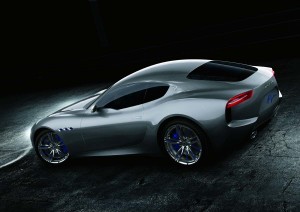
Sleek DRLs connected by a clear accent line with the iconic “V” motif in the centre, three dimensional candy-cane taillights
A six-speed, electro-actuated gearbox (MC Shift) is with the limited slip rear differential is connected to the engine via a rigid torque tube. The transaxle layout gives the Alfieri an optimized front-rear weight distribution slightly favouring the rear.
The brakes remain unchanged from the GranTurismo MC Stradale with its carbon ceramic disc brakes combined with blue Brembo brake calipers.

The 21” diameter rear and 20” front wheels in aluminium integrate decorative spokes that remind us of classic spoke wheels of the 1950s.
Design concepts
Alfieri steers the image resonance of Maserati from the sporty four-door salon styling of Quattroporte and Ghibli back to the brand’s remarkable racing heritage of exotic GT cars. Masterminded by Lorenzo Ramaciotti, Maserati’s design guru, the Alfieri was created at the Maserati Centro Stile in Turin by a small group of talented young designers led by Marco Tencone. In Ramaciotti’s words, “The Alfieri is a transition point between 100 glorious years of history and the future that is opening up before us. I sincerely can’t say that we’ll see this car in production in two years-time, but I’m certain we’ll see something very similar.”
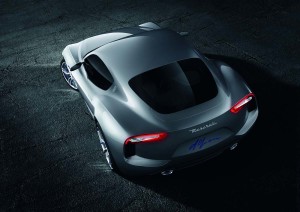
The Alfieri signature, retrieved from an old Maserati document is sculpted in blue into the rear number plate recess.
The design harks back to the 1957 3500 GT, the 1959 5000 GT and the 1969 Indy. The designers also heavily drew inspiration from the Maserati A6 GCS-53, the last Maserati designed by Pininfarina in 1954 before making a comeback almost five decades later, with the Quattroporte and the GranTurismo. More than just a racing machine for gentlemen drivers, the A6 GCS-53 blended automotive technology with distinctive design proportions: a small cabin positioned almost over the rear wheels, an expansive bonnet and long, sinuous wings stretching nearly to the rear wheels. While the inverted A pillars of the A6 GCS-53 would be out of place in the new model, their optical effect has been recreated by a sculptured line that starts from the bonnet and fades to the door high line, making the windscreen look larger. The low grille is from the contemporary Maserati models and is vertically split into two concave sections that seem to hang in the air.
By the way, if you were wondering what the longwinded acronym stood for, it is 6 cylinder, Ghisa, Corsa, Sport, epithets that convey its long bonnet, and rear-set 2 cabin design. The A stands for the obvious: ‘Alfieri’.
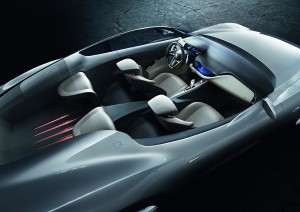
The racing brutality of a classic Maserati of the 50s is seen in the Alfieri’s floor finish with a material that imitates oxidised steel.
A liquid metal colour called “Steel Flair” has been chosen for this Maserati 100th anniversary concept, making it look as though a metallic veil has been draped over a naked body. The decorative spokes of the forged wheels, the brake calipers, the grille, the iconic triple air ducts on the sides, the rear diffuser, the provocative eyebrow of the exhaust tail pipes are all finished in Maserati Blue. The front bumper spoiler and rear diffuser are in carbon fibre with aluminium inserts.
Minimalist interior
In the 2+2 seat cabin, the design team have created a study in simplicity and minimalism. The suspended dashboard is conceptually inspired by that of the Maserati 5000 GT and boasts a clean, organic, two-tone design built around a central TUFT screen.
Rather than analogue clocks, the instrument panel features TFT displays inspired by modern photographic camera menus in the way they indicate km/h and engine rpm. Instead of a rotating indicator, the numbers themselves rotate around the clocks. Current speed and RPM are highlighted by a magnifying glass effect.
Luna white and dark Basalt blue are the dominant colours inside the hand-finished detailing of the airy Alfieri cockpit. Poltrona Frau aniline leather with a natural look and feel covers the seats, dashboard and central console. Copper subtly highlights the most character lines and brings a retro feeling to an otherwise futuristic environment.
The interior has a classic 2+2 layout with an open space luggage compartment. The passenger seats, though inspired by the racing bucket seats of the ’50s, look futuristic and they tilt forwards through 90 degrees serving as luggage bulkheads.
In summary, the Alfieri concept is nothing but a Maserati GranTurismo Stradale that is redefined to show us a glimpse of the future though the drive-train is an echo from the recent past.

